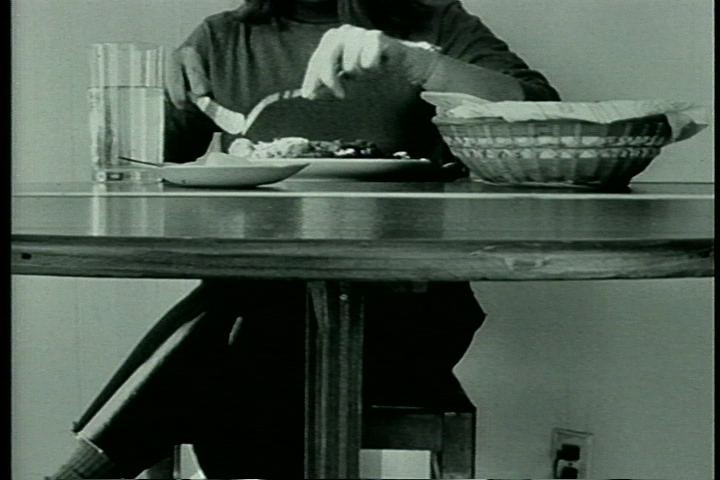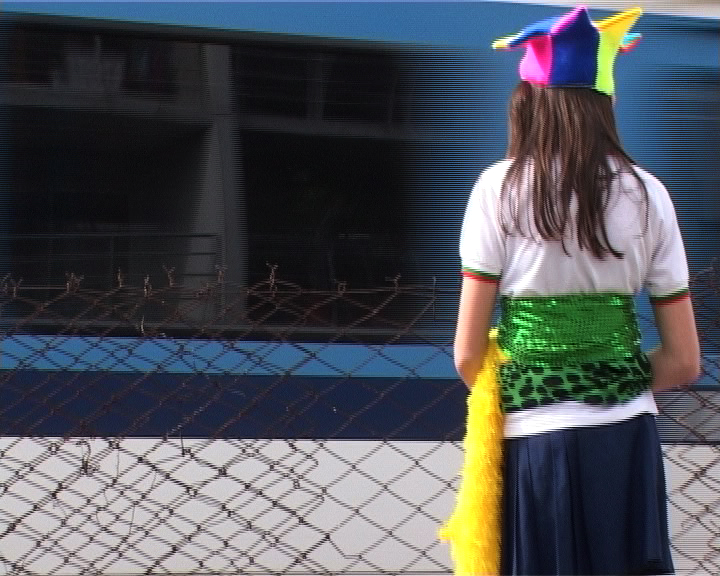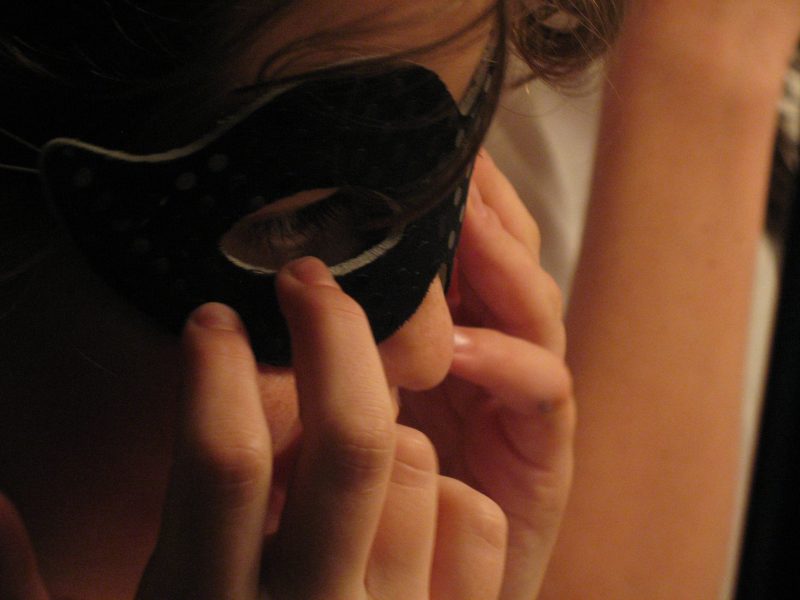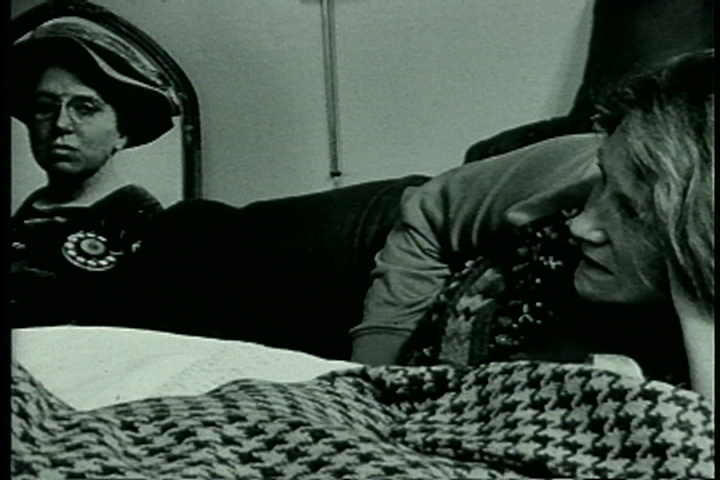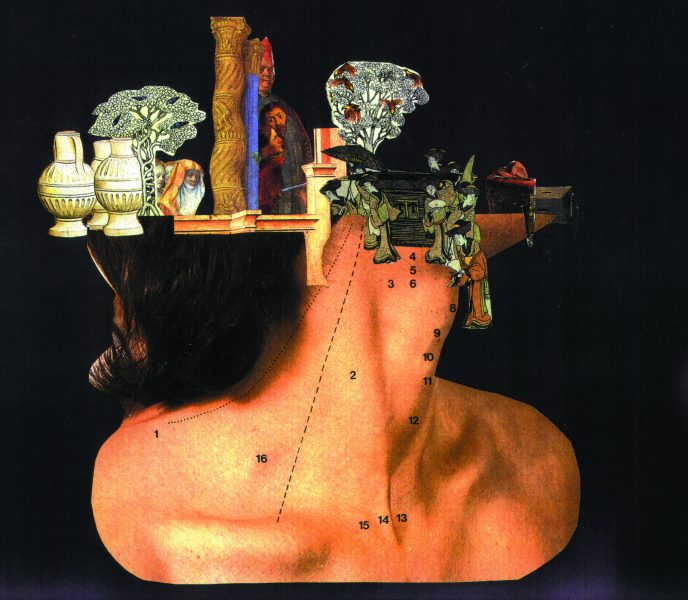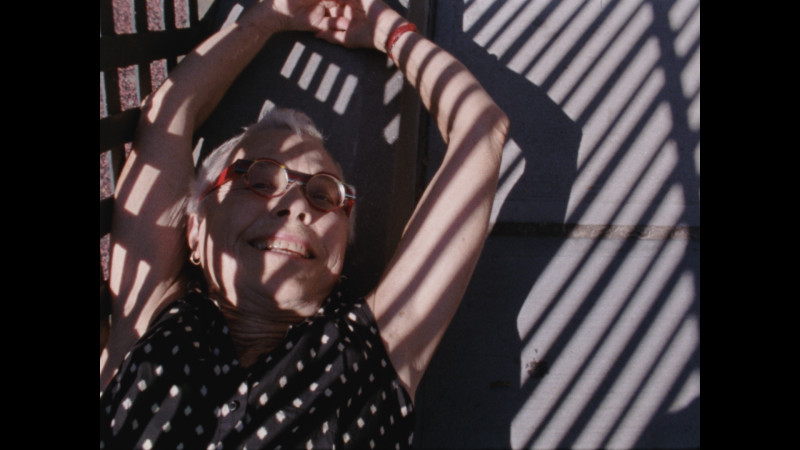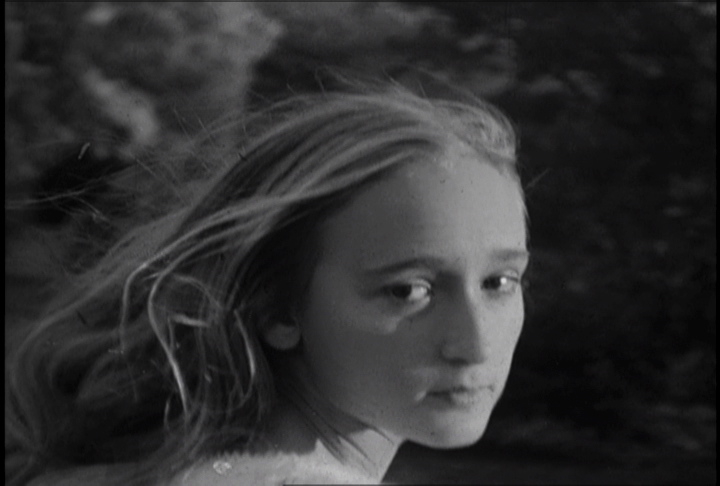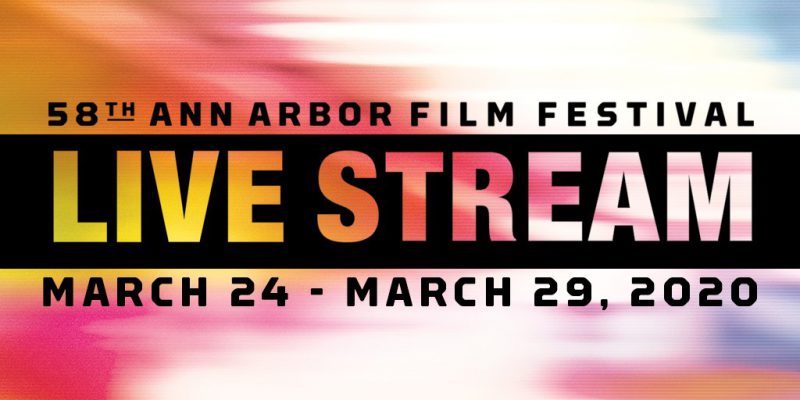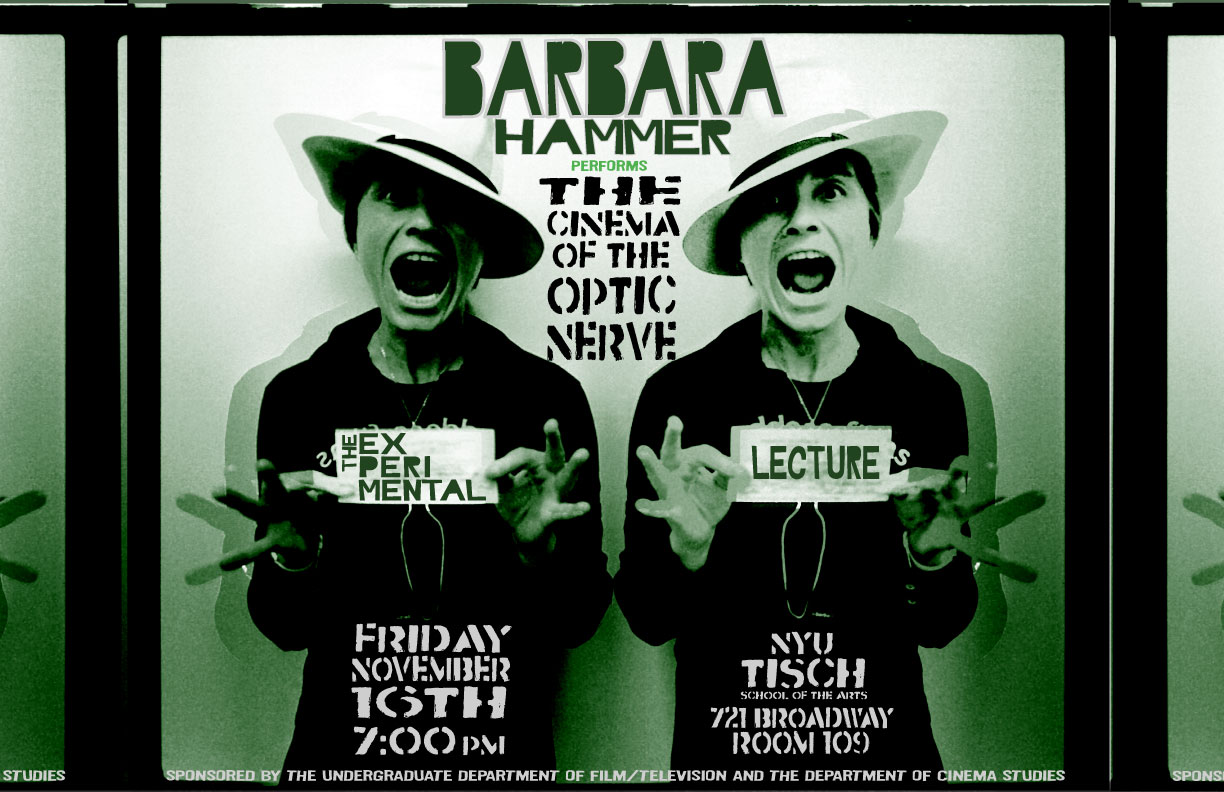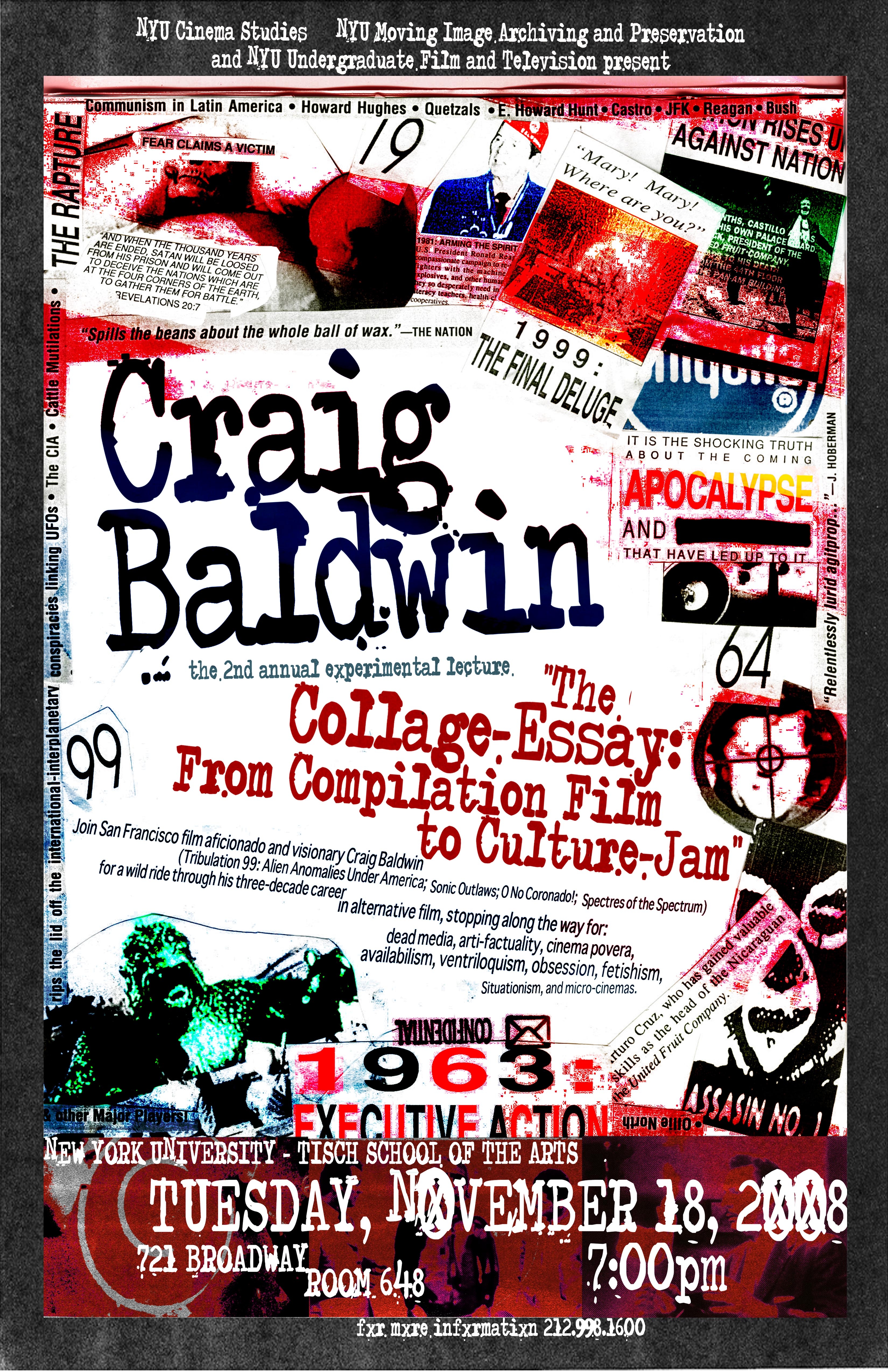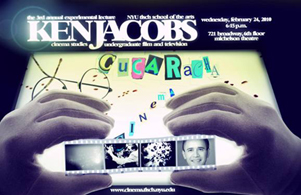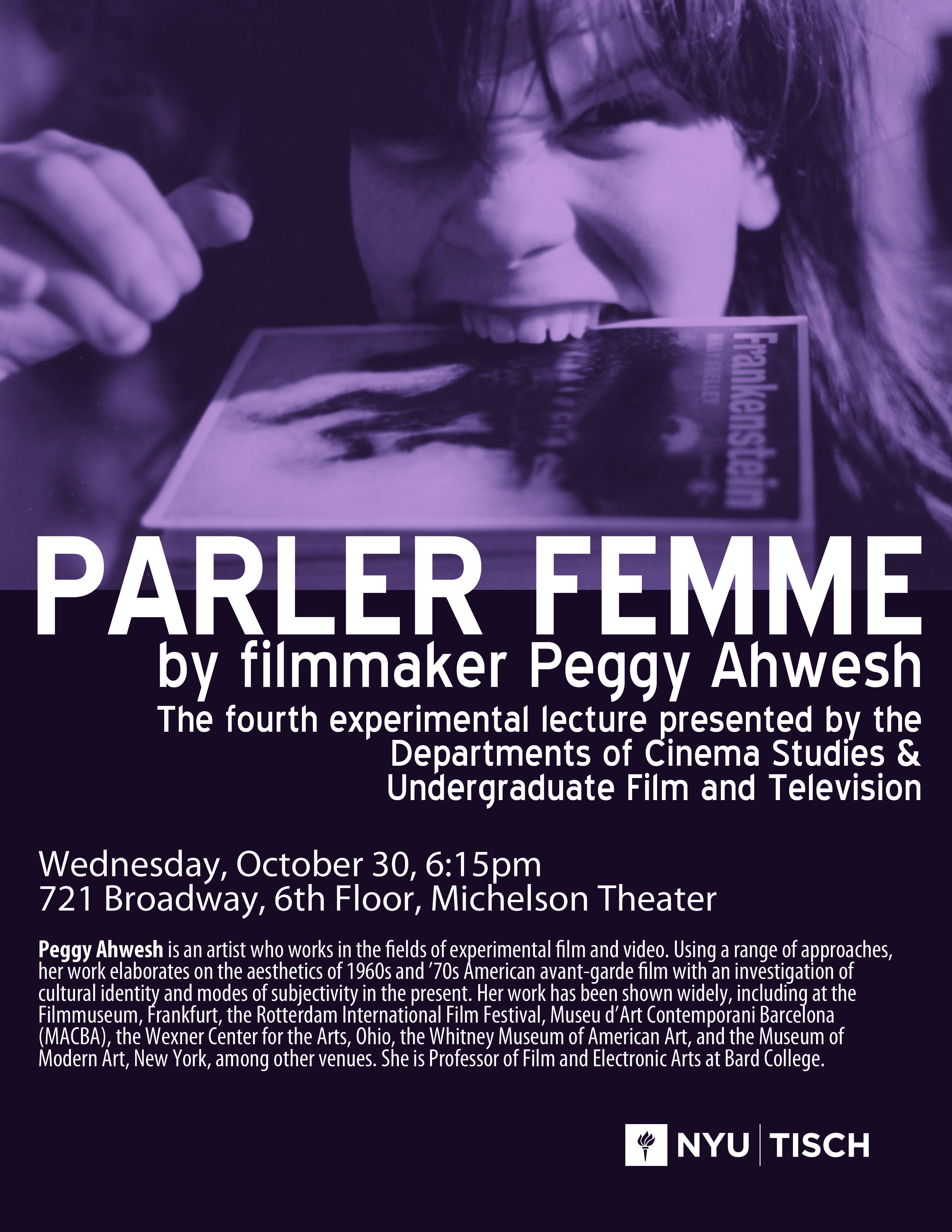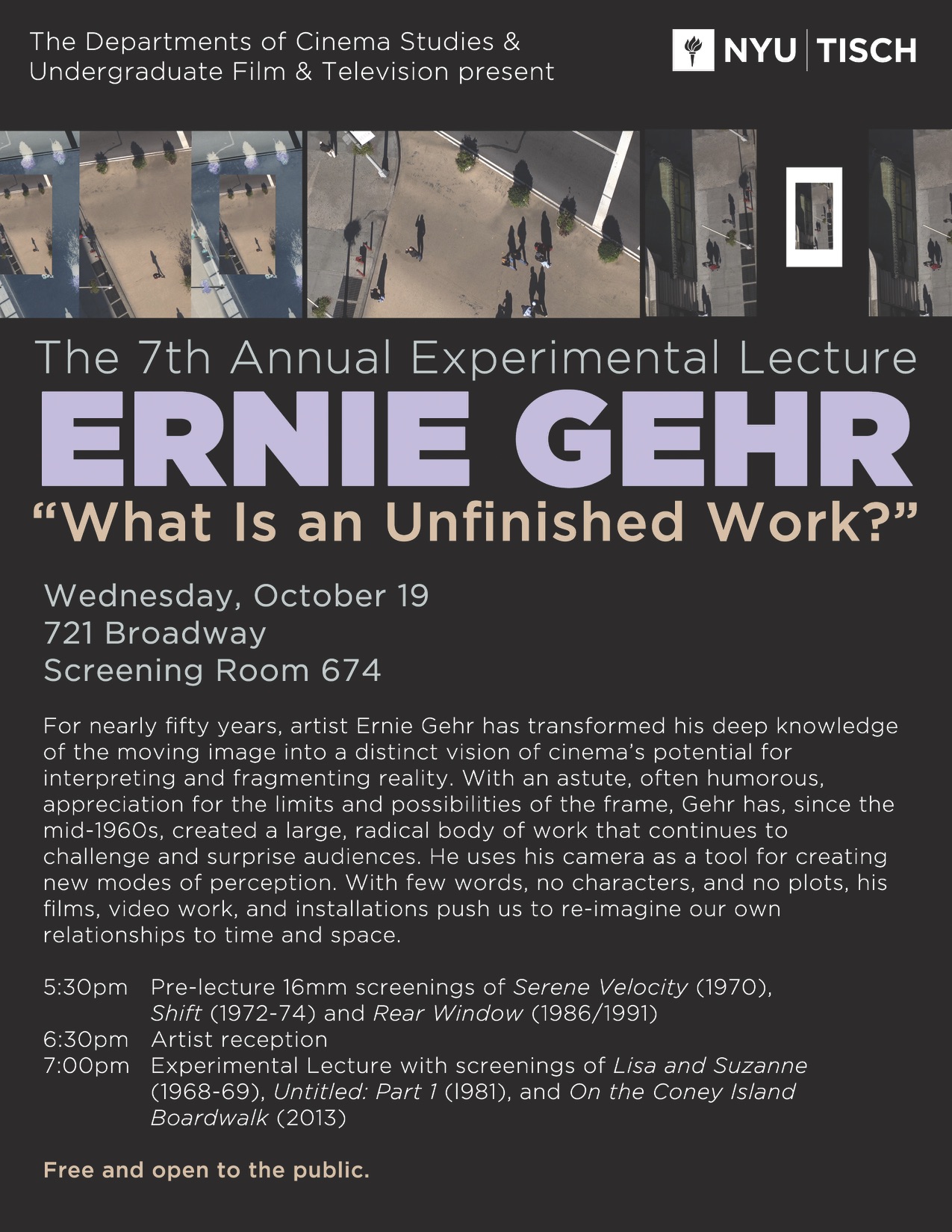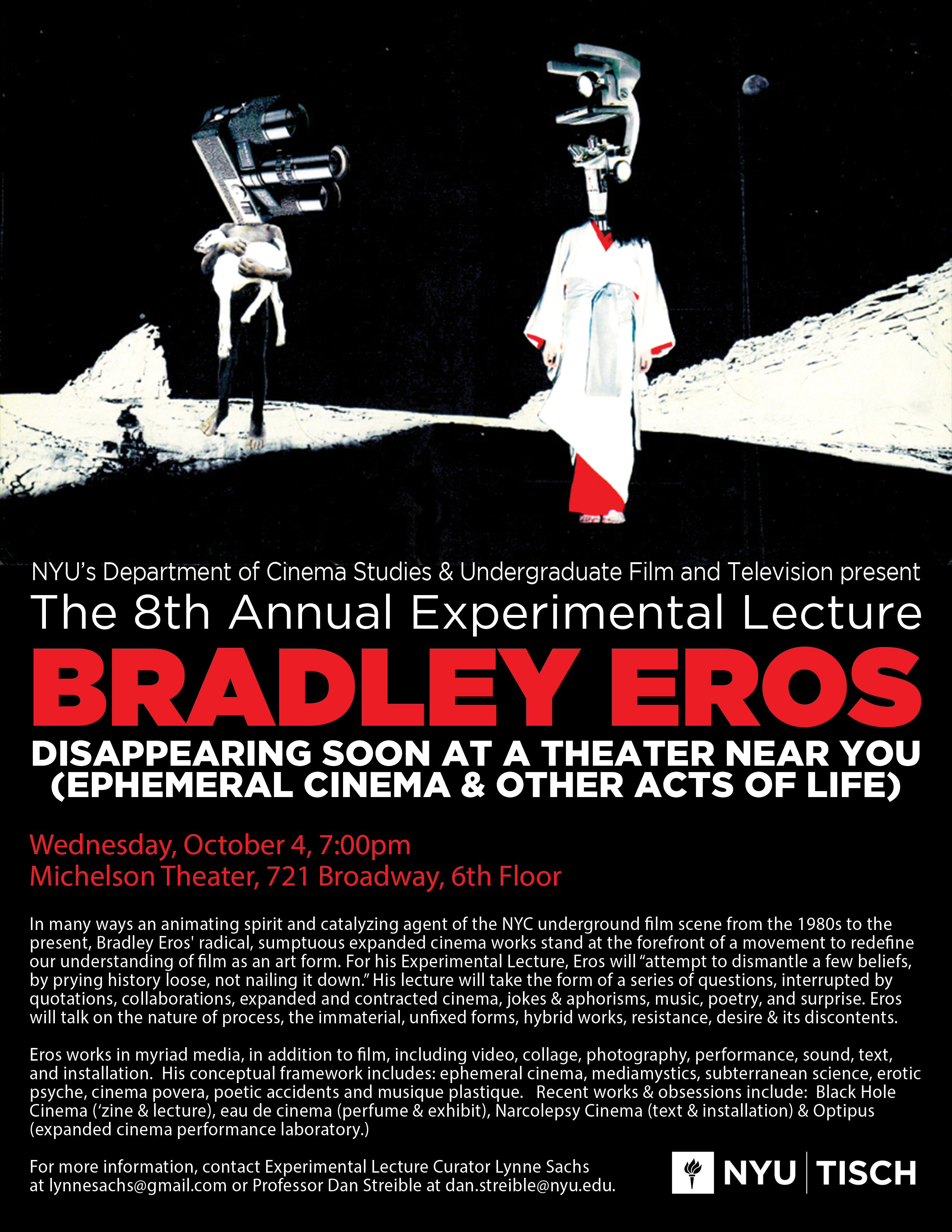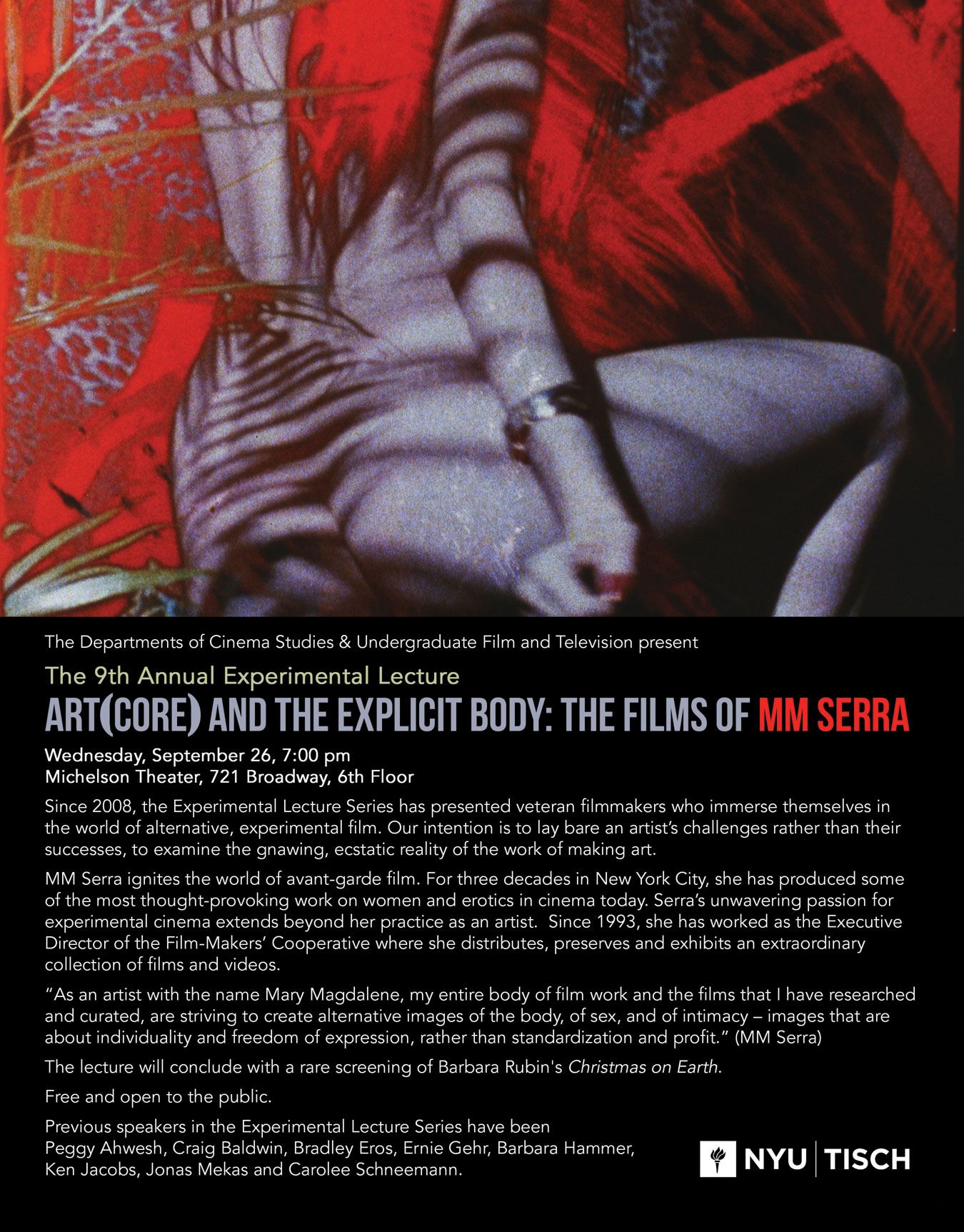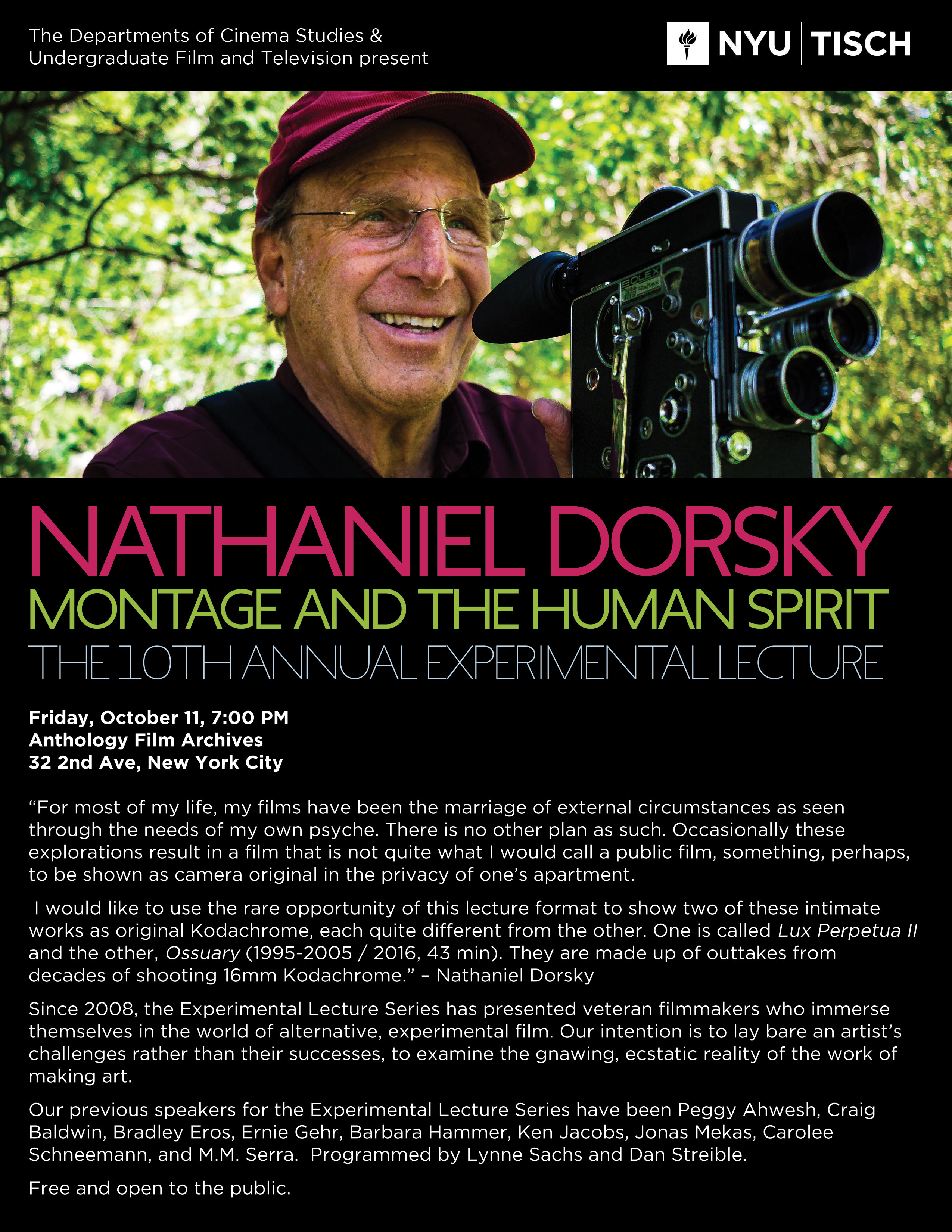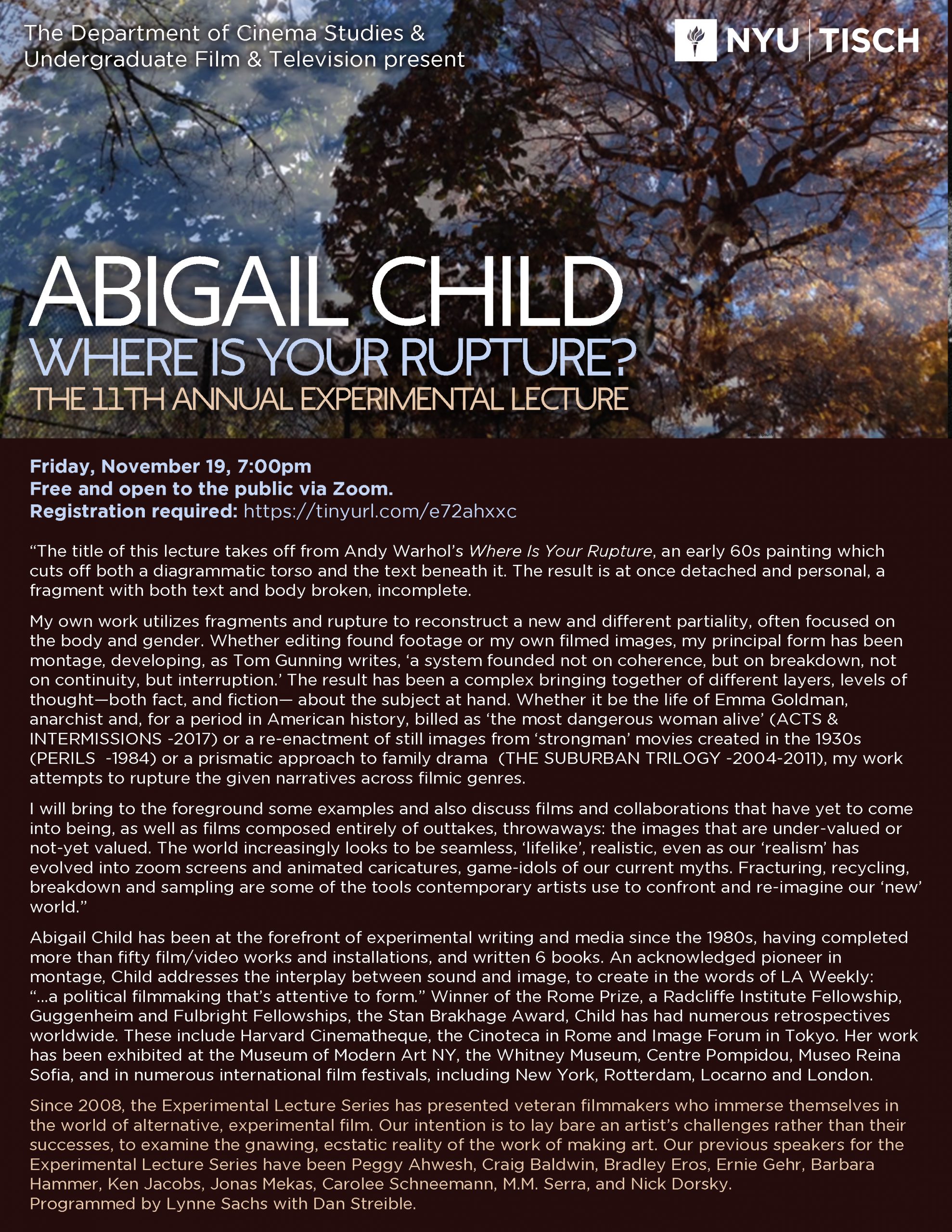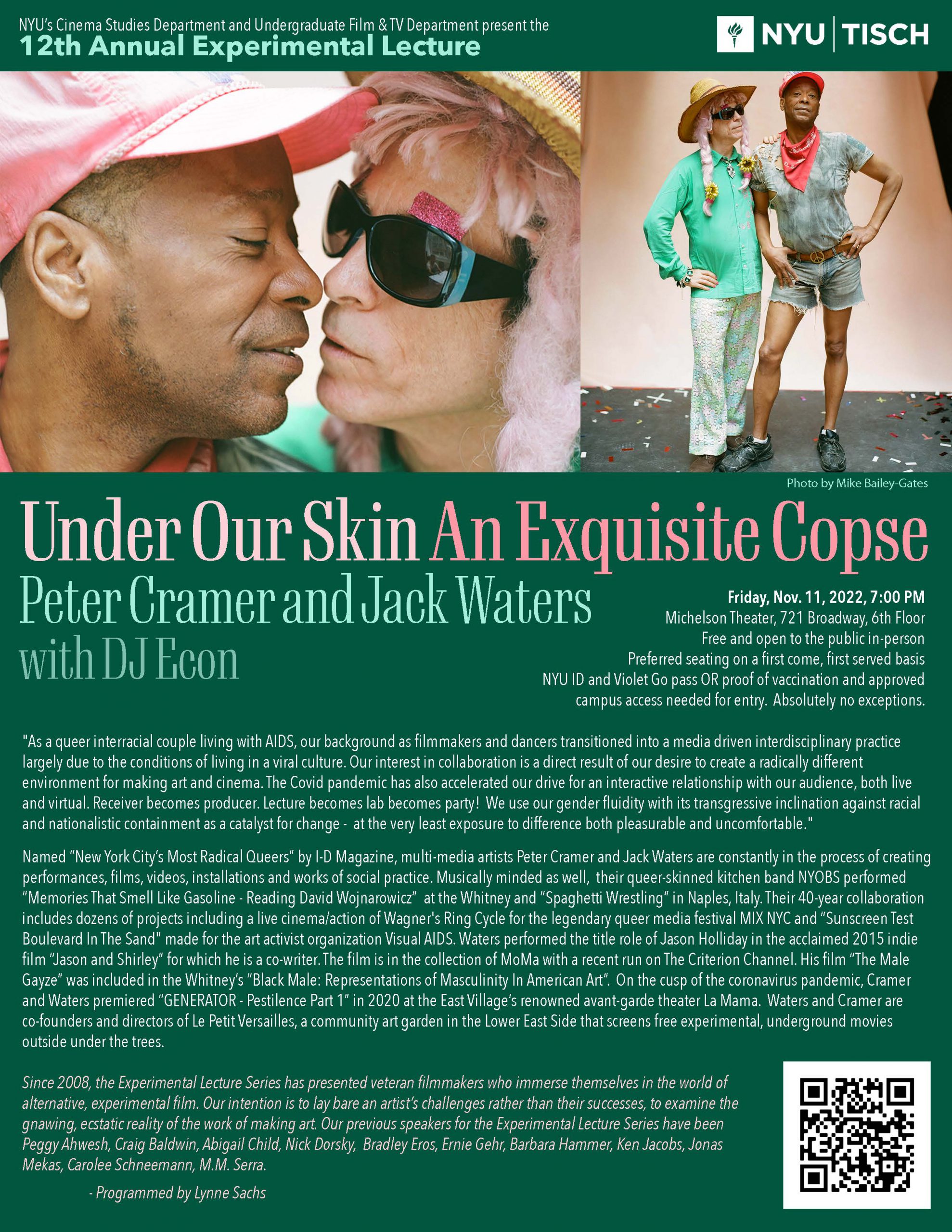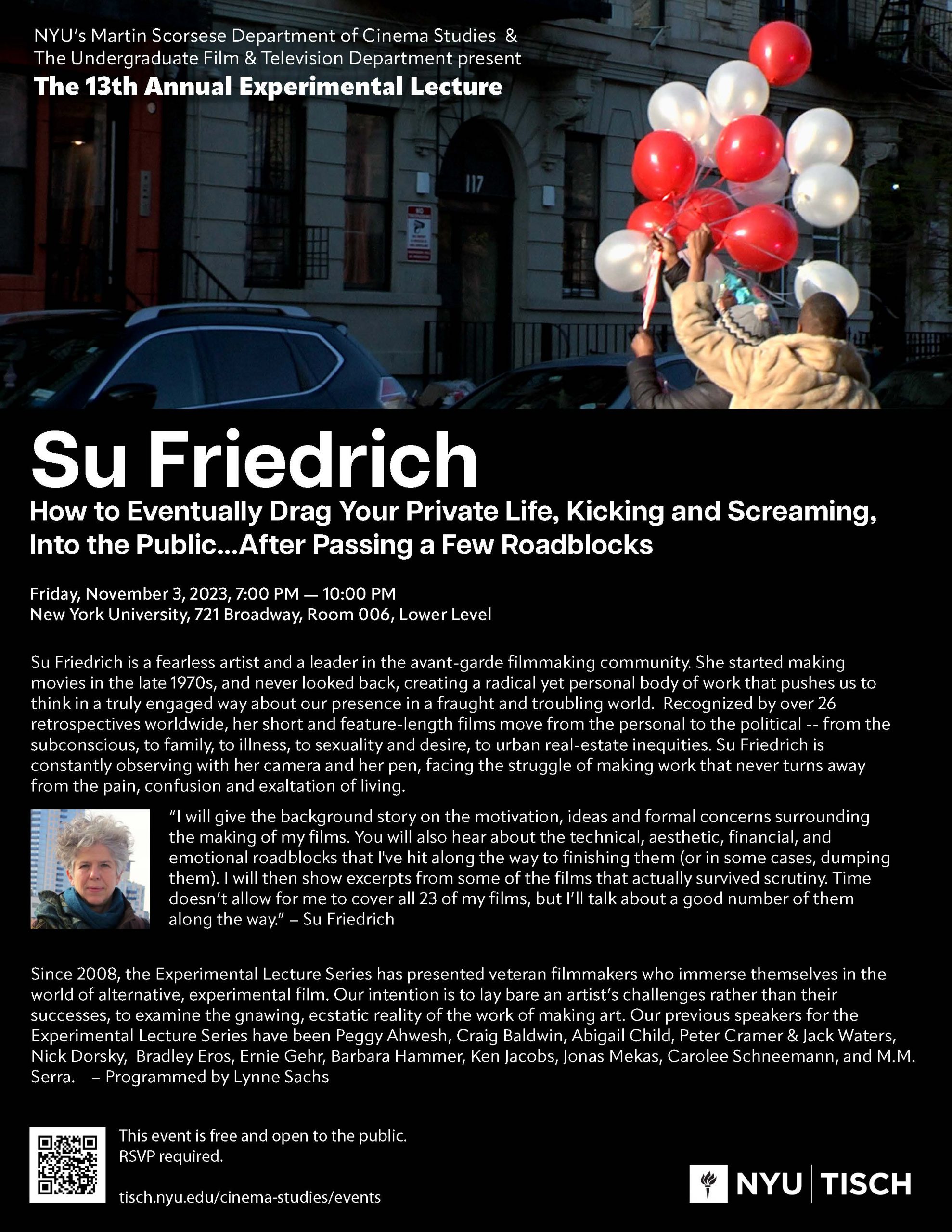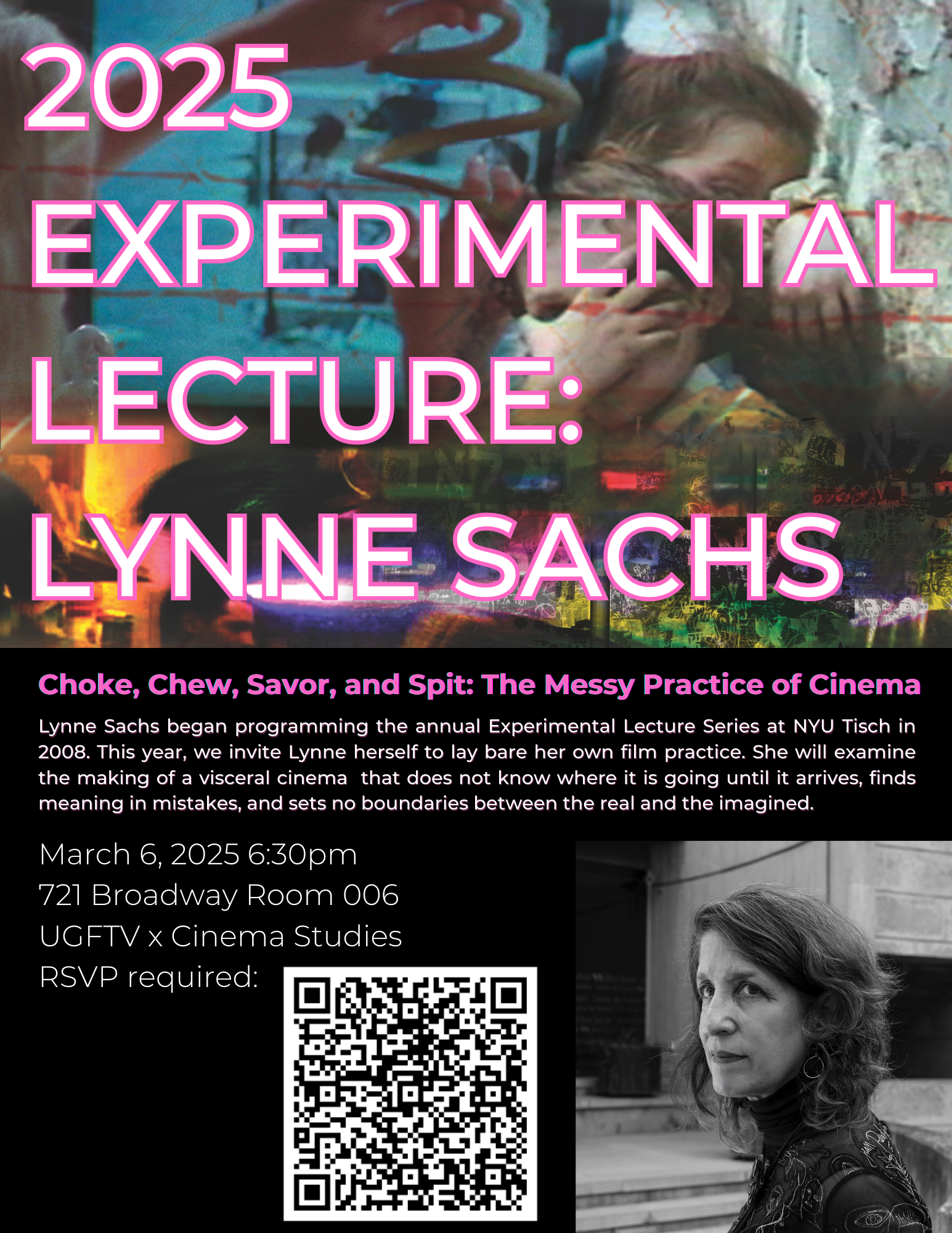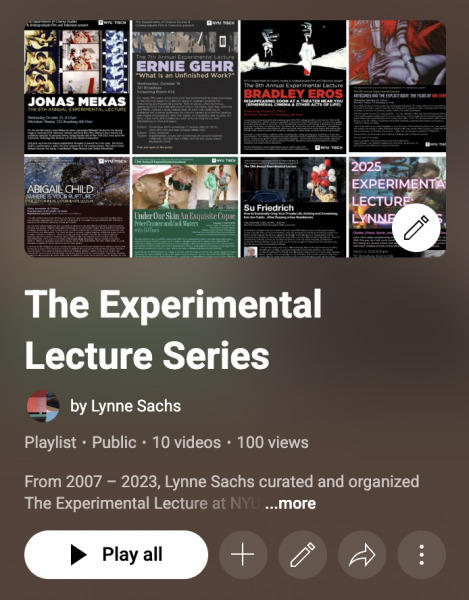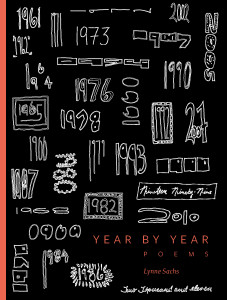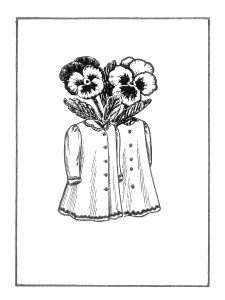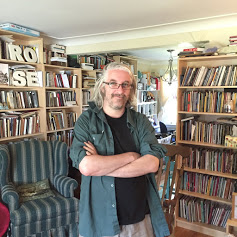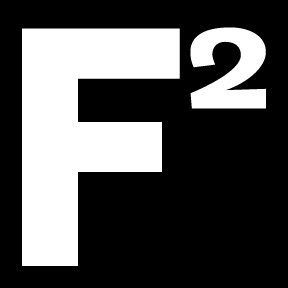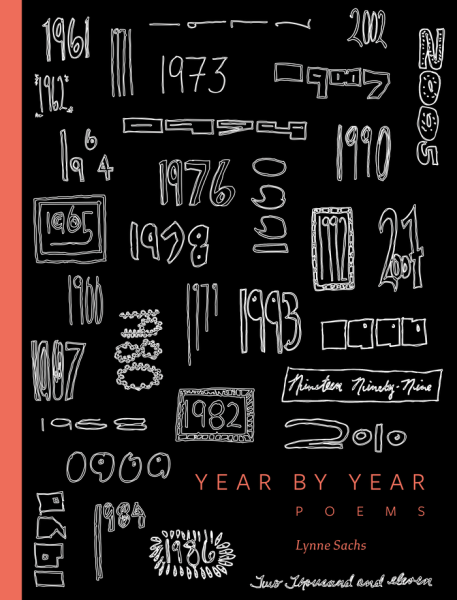By Andrew Key
Roland Barfs
April 14, 2020
https://rolandbarfs.substack.com/p/she-observes-herself-and-others-learning
A Year in Notes and Numbers (2017) is a 4 minute silent digital video work by the American experimental filmmaker Lynne Sachs, which consists of close-up shots of a few words from to-do lists and notes to self, mostly written on yellow ruled paper, with names, errands and artistic intentions written in various coloured inks, circled, crossed out, stained, creased, blotted: “Write Mom / to thank!”; “Vitamin D”; “FROGS”; “Make 2 shelves / Build 2 shelves”; “lightbulbs”. These lists are occasionally overlaid with medical terms and measurements: “Sodium / 138”; “Globulin / 2.6”; “eGFR / 86”. At one point a section from the production notes of what is probably one of Sachs’ other films is shown: “She observes herself / and others // learning”. The next shot: “Camera as extension of her body.” The next shot: “Fun of research.” We see the minutiae of a year in a life, the endless small tasks that demand to be completed, correspondence that needs to be written, plans and ideas for projects that might or might not be realised; we also see the medical quantification of the body which performs these tasks. There are personal reminders: “Write Barbara H” (Barbara Hammer, presumably); there are political reminders: “Get out the vote”. It ends with the word “Mom”, then the figure “125 LBS”, then a few seconds of swirling reds, yellows and greys.
A Year in Notes and Numbers relates to a strand in Sachs’ earlier work, which goes right back to one of her earliest films, Still Life with Woman and Four Objects (1986). These pieces are distinct from, but related to, the experimental documentaries about political history which Sachs has also made, and focus more closely on everyday life and its reproduction. In Still Life with Woman and Four Objects—a tribute to the anarchist and feminist Emma Goldman—a woman puts on a coat, peels and pits an avocado, suspends the stone above a glass of water to sprout it, eats a meal, and reads aloud a letter of Goldman’s. Food preparation, small acts of gardening, eating and anarcha-feminism all sit on the same level. This strand of Sachs’s work is perhaps best represented in a piece like Window Work (2000), a 9 minute sound video comprising of a single uninterrupted shot of a kitchen window in Baltimore, in which a women washes the windowpane, makes and drinks some tea, reads the newspaper. Two small frames within the larger image show miniature home-movies, which gesture towards personal memory and earlier media technologies: Super 8 film as the precursor to videotape. Window Work could be read as a kind of Jeanne Dielman (Chantal Akerman, 1975) in miniature; though where Chantal Akerman shows the drudgery and tedium of housework with an unflinching clarity, in Sachs’ film the accoutrements of domesticity are shown in shadow and used to evoke a dream-like atmosphere which encourages fantasy and reverie on the viewer’s part. Jeanne Dielman tries to make housework visible, or at least questions to what extent labour can be made visible through cinema, and in doing so, demands work from the viewer, who must pay attention, sitting through its lengthy run-time and long, slow takes. Sachs’ Window Work, on the other hand, is more playful with the concept of work—does the “work” in the title refer to the work of cleaning the window, in a fairly desultory fashion, or to the artwork we are watching? Is the work of this film a dreamwork?
In contrast to these earlier explorations of the everyday and domestic in Sachs’ oeuvre, A Year in Notes and Numbers is mundane on a different level. By showing names, tasks, numbers and stray thoughts completely devoid of any context, with no date or other clue as to what they mean, a year is condensed to a flurry of seemingly meaningless activity, combined with the equally decontextualised and slightly ominous medical statistics that appear intermittently on screen. Calcium: 9.6. Is this good or bad? Sinister or reassuring? What about Bilirubin 0.7? (According to Google, both of these figures are within the average range.) By reducing the representation of a body to written memoranda and biological measurements, this recent work by Sachs is somehow both more personal and more alienating than her earlier work dealing with similar topics. The body is reduced to a quantum of figures, abstracted into data, but not at the expensive of the person who that body is, who has family and friends to write to, lightbulbs to buy, DVDs to watch, interviews to listen to, films to make.
Unending Lightning (2015–ongoing) is a six-plus hour three-channel video installation by the Spanish artist Cristina Lucas which documents every aerial bombing over civilians since the development of manned flight. It visualises a database gathered by a large number of researchers and organisations, building on research begun in 2011, on the 75th anniversary of Guernica, arguably—thanks to Picasso—the most famous aerial bombing of civilians. Manned flight was made possible in 1903. By 1909, two people could fly in one aircraft. Aerial bombing began only two years later, in the 1911 Italo-Turkish war, a war over colonial control of Libya. Unending Lightning is an ongoing work, because it will only be complete when aerial bombing over civilians, including drone strikes, is a military strategy that has been abandoned. The central screen shows a map of the world with the locations of the bombings and the number of civilian casualties marked; the left screen shows the respective military forces responsible for dropping the bomb, the type of bomb dropped, the city bombed and the known number of casualties; the right screen shows archive and documentary videos and photography from the aftermath of the bombings. I saw it at Manifesta 12 in Palermo, where it was shown in the Casa del Mutilato, a hospital for wounded soldiers designed by the Rationalist (i.e. Fascist) architect Guiseppe Spatrisano in 1936: a large temple to fascism erected in honour of the Italian annexation of Ethiopia in the same year—a conflict which saw Italy using poison gas bombs on Red Cross hospitals. As Sven Lindqvist argued in A History of Bombing, in its first years aerial bombing was seen as a convenient and exciting answer to the question of how exactly European powers could exterminate entire populations without having to get their hands quite so dirty. The origin of this technology lies in colonial violence.

Unending Lightning is a magisterial work, one requiring a collaborative team of researchers and software engineers, the accumulation and maintenance of large amounts of historical data; it is open-ended and so almost unwatchable as a single piece, with a runtime which grows with each new drone strike in Afghanistan (almost 40 per day in September 2019 alone, according to The Bureau of Investigative Journalism). The visual aesthetics of Unending Lightning resemble nothing more than a PowerPoint presentation: bullet-pointed information presented in Helvetica on grey-blue backgrounds, grainy historical photographs gradually improving in quality as the work moves closer to recent bombings and the video and photography technologies which captured the aftermaths develop. While watching it, the viewer sees the unceasing global conflicts which have unfolded over the last century and more. Near the beginning of the film there are a few moments where days go by in which no aerial bombings take place, but soon it is every day, all over the globe, often accompanied by the phrase “unknown numbers of civilians killed”. Even with the enormous amount of research undertaken for the work, we will never be able to truly know through quantification the amount of death unleashed on the world by the advent of bombing from the air.
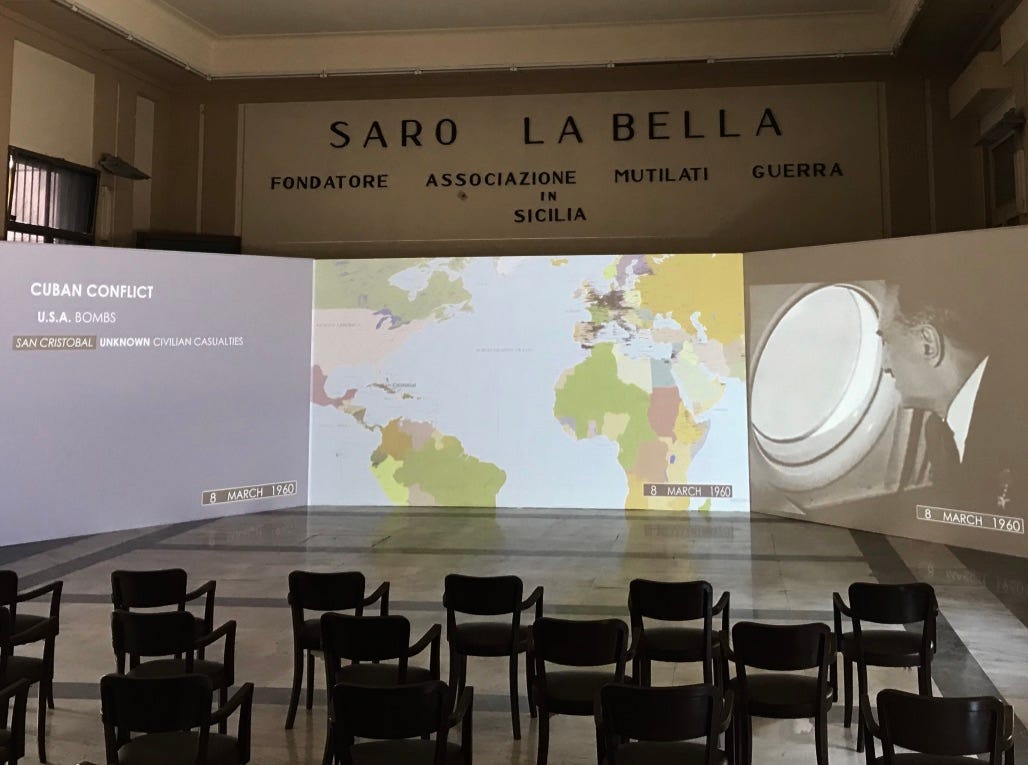
What does Unending Lightning have to do with Lynne Sachs? At first glance perhaps very little. But they operate at different ends of the same recent aesthetic tendency, exploring quantification and its limitations. In Lucas’ work, we watch something unfold which feels like an unending depiction of death and destruction, mostly of women and children; what necessarily gets left out of the work, and as such is brought concertedly to mind when we view the piece, are the actual everyday lives of the people who were killed by these bombs dropped from the air. In Sachs’ recent work, on the other hand, the abstraction of a life from a record of its daily activities asks the viewer to fill in the gaps, to imagine or project something into the space that is left open between the unfinished errands and the medical figures we are presented with. In very different ways both artists are concerned with the everyday, the way that developments in technology can start to feel familiar, natural, normal, until all of a sudden they don’t, and they erupt into the sphere of domesticity, whether that’s through the collection and retention of biological data by private healthcare companies, or the firing of a missile from a remote-controlled drone.
roland barfs film diary weeks 20–21
May 2022
https://rolandbarfs.substack.com/p/roland-barfs-film-diary-weeks-2021?utm_source=email&s=r
Lynne Sachs’ work mentioned in conversation with the work of Anne Haugsgjerd. You can watch her film “Life in Frogner” below:
As always, please consider subscribing, or buying me a coffee or commissioning me to write about a film. If you like the diary and you can’t support me financially at the moment, please share it with a couple of people you know who might like it. And feel free to get in touch if you want to talk about any of the films I write about, or want to tell me about some other films you think I might like. Thanks again!
+ Also: I recently appeared on a podcast, PRISMS, in Oslo, talking about the film diary, my thinking behind it, why I do it, how I feel about it, etc. You can listen to that here if you’re interested. +
roland barfs film diary weeks 20–21
terminal usa, life in frogner, oedipus rex, mission: impossible – fallout, vampyr, after hours
May 11. Wednesday. I have been having stomach issues for the last few days that show no sign of abating. I’ll spare you the details, gentle reader. I haven’t been eating very much and I have been avoiding caffeine and alcohol, those usual stalwarts, and I feel exhausted and run-down and fairly miserable. I worked from home yesterday but think I need to show my face in the office today, so I go in and have a few meetings, trying to ignore the waves of pain. I send some emails. I look at a lot of documents. After a few hours of this I decide I have been visible enough and I go home, where I immediately fall asleep for an hour. I wake up feeling a little better. In the evening I have an online safeguarding and boundaries training session, which is fine. After it’s over, Kate, Catherine and Tara come over for Film Club. L returns from work just after they arrive. It’s my choice of viewing. Earlier I spent some time trying to pick something but felt overwhelmed by both the endless choice of films available and by my sense of cinematic fatigue, which is still with me. I am not capable of watching a lengthy film this evening, so I end up choosing Terminal USA (dir. Jon Moritsugu, 1993).This is a sixty minute made-for-TV schlockfest that was a focal point of one of the semi-regular right-wing protests against taxpayer’s money being used to fund public television in the US: conservatives were disgusted that their constituents’ hard earned bucks were being spaffed away on garbage like this, which was funded by PBS. In fact, when the film was submitted to PBS for distribution, only two thirds of stations agreed to show it, because so many programmers and audiences found it beyond the pale. Of course, all this only adds to its allure for me, and I am delighted by Terminal USA, which is an accomplished work of 90s slacker black humour, a wholesale attack on the nuclear family and the idea of Asian-Americans as a model minority. It’s a combination of John Waters, Gregg Araki (who is thanked in the credits) and Dennis Cooper, exploring and revelling in a wide array of social bugaboos: drug abuse, male impotence, religious apocalypticism, teen pregnancy, pre-marital sex, unseemly voyeurism from pimply pizza delivery boys, queer erotic fantasies about musclar fascist skinheads stomping on your face, disrespect for the elder generations, sexually ambiguous bleach-blond perverts dressed as vicars and toting firearms, and the violation of the moral sanctity of cheerleaders. It is cheap and gross and stupid and sloppily made, it looks and sounds kind of half-assed and rushed, and the acting is so off-tempo and stoned that it feels like everyone present inhabits their own separate universe. It unravels into a complete shit-show, ending with the deus ex machina of a character being beamed up to an alien spaceship. At one point some skinheads (one of whom is played by Gregg Turkington) erect a burning cross in a family’s front yard, soundtracked by classic DC hardcore band Void. It’s a highly kitsch and camp punk film, which surely would have only been a source of frustration, bafflement and disgust for the majority of people who happened to catch it on TV in 1993. I really enjoy it. I’ve not seen anything else by Jon Moritsugu, but I’m very keen to check out more of his work, which includes delightful titles like Mod Fuck Explosion, Pig Death Machine, Sleazy Rider and, most winningly of all, Mommy Mommy Where’s My Brain, a short which is described as half AC/DC, half Derrida. Terminal USA is a joy: totally uproarious garbage. Well worth going out of your way to find a copy (I didn’t watch it there, but apparently it’s now available on the Criterion Collection, so you don’t even have to look too hard).
May 17. Tuesday. A warm day which I mostly spend indoors. My new schedule dictates that I should normally be at work today but, for reasons too boring to type out, I’m not. I have nothing pressing to do, and so I spend the day mostly in a state of anxious uncertain tension, trying to decide what to do with myself. I send some emails. I look out the window. I don’t really manage to concentrate on anything and feel the old muddy worry about squandering my life start to bubble away. At midday, I walk to the bank down the road and hand them the letter addressed to them which I found lying in the street yesterday. My good deed done, I scurry back inside. I eat some asparagus and a poached egg for lunch. L is marking. Mike sends me a link to the podcast about this diary that we recorded yesterday; I’m not in the right state of mind to listen to myself talk so I text Catherine and ask her to listen to it for me — she assures me that I come across well in it: ‘thoughtful’. Good enough for me. I’ve been trying to avoid social media recently because it’s been making me depressed, or compounding my recent spell of depression, or both, more so than usual anyway, but I sign in to share a link to the podcast, and then I get sucked into a few more hours of dreary procrastination. It clouds over outside and I feel a little better about being inside. Mid-afternoon, I decide that I’ve had enough of this state of mind and want to get on with something useful. I watch Life in Frogner (dir. Anne Haugsgjerd, 1986), which Mike has commissioned me to write about for PRISMS. This turns out to be perfectly suited to today’s mood of distraction and despondency, and it makes me feel a little less isolated in my procrastination, which is nice. It’s a short film, 22 minutes or so, about Anne Haugsgjerd’s efforts to sit down and write a script for a film about Frogner, the district of Oslo in which she lives. She sits at a typewriter, drinks some coffee, smokes, gets up, tidies her desk, sits back down, gets up again, cleans her windows, watches a woman sunbathing across the street, watches some people walking dogs on the street, sits back down, starts typing, stops typing, puts her head in her hands. This, I read, is Haugsgjerd’s first film, and I find this information very pleasing, satisfying in the familiar note of understanding it strikes. What better way to announce your arrival as an artist than by expressing your incapacity to create art? The doubts, the distractions, the lack of focus and the false starts, the blinding whiteness of the blank page, the struggle to just sit down and actually get on with it: surely the universal experience of the artist-manqué. Obviously, I’m sympathetic to this strategy of defeating the block by embracing the block, partly because I used it to get my own first novel written, and it seems to have worked well enough there. But Haugsgjerd’s exploration of her failure to move forwards in her work also speaks to the aesthetic strategies I’ve employed in writing this diary, and I feel gratified to have this part of myself reflected back at me. I am always reluctant to describe things as ‘relatable’ — doing so is cheap and easy and doesn’t say anything meaningful or interesting about the work, often merely serving to express the critic’s own narcissism — but I find Life in Frogner very relatable, narcissist that I am. There are a few stylistic elements that remind me of other films, of course — a couple of shots that make me think of Lynne Sachs, a little hint of Varda in some of the meta-textual humour of the film — but the style feels very assured and clear, particularly considering it’s a debut. The tension explored in the film between the observation of life and participation in it, the impossibility of simply being a spectator, and the anxieties and regrets that emerge from trying to mediate your whole life through an artistic practice: all of these feel particularly sharp for me, and I am impressed with the openness and vulnerability with which Haugsgjerd explores them.“Life is everywhere, life is outside your window. Life is pulsating there as you’re trying to write about life. … You should have lived that life instead of making film at all.” There’s a kind of wry, amusing edge to the film, a playfulness which stops it from feeling too heavy-handed or self-serious, which demonstrates an awareness that the writer struggling in front of their typewriter is, ultimately, a comic figure. And this tone makes the closing sentiment of the film, an expression of optimism in the face of artistic doubt, even more resonant for me: “I am both shy and an exhibitionist at the same time. That’s the conflict in me, but I think it’s about exposing yourself. I think if you do that you will always find someone out there that will understand.” It’s a risk, but there’ll be someone who gets it. Comforting words. You can find Life in Frogner on Vimeo. A really lovely little film.
Afterwards, I write the above entry. L goes to Lincoln. It starts raining. I engage in the shameful form of active time-wasting which has recently absorbed my life: playing The Legend of Zelda: Breath of the Wild on the Switch that I’ve borrowed from Catherine. This is partly to blame for the last week or so of my not really watching any films, compounding the previous feeling of burnt out apathy. I haven’t played video games for a long time, other than fairly infrequent occasional grubby bursts of Civilisation V, which I think I’m now well and truly done with. Immediately with Zelda I feel fully immersed back into the atmosphere of sweaty compulsion and addiction. It is kind of horrendous how effective it is at sucking up time: two, three hours can pass without any sense of accomplishment or even pleasure. It’s weird and I feel very ambivalent about it. Tonight I manage to restrain myself to playing for 90 minutes. Then I pull myself together and watch Oedipus Rex (dir. Pier Paolo Pasolini, 1967). I’ve not seen it before and I watch it partly out of a stirring of the completionist urge towards PPP. I feel like this is one of the few Pasolini films which I very rarely see anyone saying very much about. Out of his other works it’s unsurprisingly closest to Medea in terms of style, employing a similar visual salmagundi of elements lifted from various exoticised and appropriated national folk cultures: like Medea, Oedipus Rex takes place in a past which can actually be located both nowhere and nowhen, which is appropriate for a reworking of a Greek myth which sits at the foundation of Western culture. That said, the beginning and ending of the film are very clearly located in Italy: the film begins with the birth of a child to a bourgeois woman who is having an affair with a soldier in 1920s fascist Italy, and it ends with the child, Oedipus, blind and destitute, being led around the industrialised post-war Italian landscape, with a bunch of shots that feel more like Antonioni than anything else I can remember seeing in Pasolini. It’s the middle section, the bulk of the film, which takes up the riot of colour and costume and various musical borrowings from cultural ethnographies that we also see in Medea. I think I like it a fair amount but probably not as much as I like Medea. It’s actually quite a challenging and uneven film and I feel more ambivalence about it than I usually do with Pasolini, who, in all honesty, I am usually pretty uncritically positive about. I don’t know if this is really a success or not, but it’s still worth watching. I think of a few other films while I’m watching it, neither of which is very similar at all to Pasolini’s Oedipus Rex, but which perhaps can help situate my experience of the film in a kind of Venn diagram: it’s somewhere between Buñuel’s Simon of the Desert and Piavoli’s Nostos: The Return, maybe. I’m very interested these days in reworkings and modernisations of Greek myth, thanks to my efforts to work on The Bacchae, and I feel like there is a lot here I find useful for that purpose. I don’t feel entirely satisfied when it’s over, but I think the problems I had with it — which, to be frank, have kind of dimmed in the few days between watching it and writing this — are actually generative in some way. One thing I particularly enjoy is the film’s total lack of interest in continuity: when Oedipus is still a baby he is depicted by at least four different children, who barely look alike at all, sometimes switched half-way through a scene. I love this. Who cares what the baby looks like, that isn’t the point of this film, a baby is a baby is a baby, this is a story of the universal psychological conflict which affects everyone whether they want to accept it or not. I feel like I should have more to say about Oedipus Rex, maybe something which takes advantage of the very ready-to-hand psychoanalytic engagements available to me, but I’m going to stop there. If you’ve read Freud and then you watch this it all feels pretty familiar and clear anyway. I’m glad to have gotten to it, but I don’t know if I’ll be rushing to watch it again any time soon.
May 21. Saturday. Will is visiting. Last night we went to the Rutland, where we met Kate, Catherine and L, who left us to go and watch Everything Everywhere All At Once. Will and I did not go to see it, but kept drinking and ended up having a long conversation with one of my ex-colleagues from the care home who I ran into by chance. Afterwards, L, Will and I stay up until 2:30 watching music videos on YouTube. Today we are not moving very quickly. We go get some croissants and coffee and sit outside for a bit. We go to Kollective for lunch with Kate and Catherine, and then go for a drink at the Dorothy Pax, next to the canal. Then we walk up the canal in the sun to Attercliffe, where we go to St Mars of the Desert; a new experience for everyone. It’s nice. The weather is pleasant. We spend the afternoon drinking and then get a taxi home. Kate and Catherine rejoin us after a brief hiatus, and we order pizza from Napoli Centro and then watch Mission: Impossible – Fallout (dir. Christophere McQuarrie, 2018). L and I saw this in the cinema when it came out; a 10am Sunday screening at Duke’s at Komedia in Brighton with a hangover, and it was a really excellent experience. We choose to watch this I guess partly because we’ve all seen Tom Cruise’s recent comments at Cannes being shared over and over: when asked why he feels the need to do all the stunts that he does, he replies, smugly, that nobody asked Gene Kelly why he danced. An incredible answer. I perhaps don’t really explore the depths of my feelings about Tom Cruise very often, but I really am starting to believe that he’s among the greatest actors alive. He’s not very versatile and he’s certainly never complex, but he has heroically embraced his limitations and understood his skills completely, and he’s never boring to watch, never mediocre or half-assed. Tom Cruise is always giving everything to his work, and I always enjoy watching him. The whole Scientology is whatever; I feel like we can move past that — we all know about it, and it’s fucked up, but he’s still a completely eccentric genius, whose strangeness only gets more intense the more actively he pretends that he’s in any way a remotely normal person. The Mission: Impossible franchise is some of his greatest work, and Fallout is a hugely entertaining piece of cinematic exuberance. Henry Cavill, who I generally think is hugely dull and tedious to watch, is perfectly cast here as a bland evil CIA agent who becomes Cruise’s antagonist. In the big climactic helicopter chase with which the film ends there are some great shots of Cavill just sitting staring blankly into space as Cruise tries to crash another chopper into him: the lack of any spark of intelligence or engagement with the world behind Cavill’s eyes, the deadened glaze of an animatronic plank of wood, are some of the funniest moments in a film which is filled with hilarity. Another great moment is right after Tom Cruise’s emotional reconnection with his ex-wife, when we get to see Tom sprinting away in the background, both arms pumping at full velocity. I would prefer if Simon Pegg wasn’t in this film but it’s quite useful to have such an easy target for any irritation I feel with the film: all blame for any lack in Mission: Impossible – Fallout can be placed at Pegg’s feet and then be forgotten about. It’s a riot. Everyone in the room is shrieking and yelling, we’re all having a nice time, it’s genuinely thrilling and exciting even though we’ve all seen it before. Tom Cruise is a genius. I think I’ve got a long-read about him bubbling away, so if anyone wants to commission that for a publication please let me know and I can give you 20,000 words of hagiography in less than a week.
May 22. Sunday. Will is still here. We go get a sausage sandwich from the café in Endcliffe Park and then walk to the coffee van in Bingham Park. Will and I eat some cannoli on a bench. We come home and L and Will play video games for a little while. Then we walk into town and go to Showroom, where we see Vampyr (dir. Carl Theodore Dreyer, 1932). None of us have seen it before. I’m pretty sure I’ve not seen Dreyer’s Joan of Arc but something in the back of my mind is telling me that I watched it in a depressive funk in either 2017 or 2018, before I started the diary. Which would make sense, and perhaps having seen it and then forgotten everything about it is further justification for continuing this project, so I can keep track of what I watch in my various fugue states. Anyway, I have high hopes for Vampyr, although perhaps with a slight wariness: I am aware that I often find 1930s films, even the greatest films of the period, a bit of a tiresome slog, and I prepare myself to be a little bored. And maybe I fade in and out of attention a little but for the most part I’m pretty absorbed by Vampyr, which is much stranger and more uncanny than I’d anticipated. As Will points out afterwards, we’ve all seen the vampire myth explored on film a bajillion times, and there isn’t a huge amount here in terms of plot that isn’t very familiar, but with that taken for granted the viewer can focus their attention elsewhere: the extremely intense and odd visual style. This is a dream film, an unpleasant and jarring nightmare where images don’t always make sense in the way you would expect. There are a fair amount of visual effects which, despite being 90 years old don’t actually feel dated or overly familiar but really add to the feeling of uncanny nausea permeating the film. There are some shots filmed outside in a very very soft focus which are extremely grainy and quite challenging to make out any detail of the image and, rather than feeling like a kind of technical mishap, these feel like the kind of half-remembered half-recognised experiences that are otherwise only experienced in dreams. The use of doubling is particularly weird and disconcerting. The influence of these elements is absolutely transparent, particularly in the obvious surreal filmmakers like Buñuel and Lynch. Vampyr is not scary, exactly, but it is unnerving and confusing and unpleasant; the plot, freely adapted from a Sheridan Le Fanu text, is really just a canvas on which Dreyer and his cinematographers can create some very striking visual compositions. It’s an odd film. I suppose I feel a very clear divide during it between my deep and intense aesthetic enjoyment in the style and the cultivated boredom I feel about watching a 1930s horror film. But it’s good to see it, particularly in a cinema. At home I wouldn’t give it the attention it merits. I’m a little relieved when it’s over, and I probably would have liked it even more if I’d have a coffee before, but it feels like a very worthwhile experience: getting to see what horror was like before everyone had figured out what the genre should feel like. Apparently there was a riot when it first screened, with the audience demanding their money back because of how impenetrable it felt: clearly a sign of its brilliance.
After Vampyr we go for a beer at the Industry Tap and then walk home. I sit down and try to rattle off as much of this diary as I can in one hour. Then I cook an asparagus risotto. Afterwards we watch After Hours (dir. Martin Scorsese, 1985), which is a feel-bad yuppie nightmare film about a man having a very unpleasant evening in New York. It’s really good, in many ways a very uncharacteristic Scorsese picture, a mixture of noir, screwball comedy, psychosexual thriller and existential horror film. There are clear homages to Hitchcock’s style throughout and there’s also a really excellent moment that cites Kafka’s Before the Law, recast as a struggle to gain admittance to a nightclub playing Bad Brains. I read in Scorsese on Scorsese that the both the ending of After Hours, in which our bedraggled hero just ends up back at work the next morning, and the Kafka allusions were ideas that came directly from Michael Powell’s response to a preview screening at which the ending was fudged and unclear, and that Powell’s account of Kafka’s work really resonated with Scorsese because he had recently had a frustrating bureaucratic experience trying to get funding for The Last Temptation of Christ. Which is exactly the kind of coincidental and relatively meaningless trivia that I love. There’s also a great moment where the protagonist spends a while looking at some graffiti on a bathroom wall of a shark biting a man’s erection. It’s a film about emasculation and sexual neuroses, but it’s also a film about the intense lengths someone might go to in the hopes of encountering some kind of spontaneity and novelty in their drab life. Really one of the great New York films in the interplay we see between the unending potential of the city and the almost inevitable frustration and disappointment that results in the majority of the encounters we watch. It also feels a bit like a cocaine-addled downtown remake of The Exterminating Angel, another film about members of the bourgeoisie who just can’t quite make it home. It’s a fun watch; at times it feels as though it’s running the risk of getting bogged down and a little tiresome, but it has enough jubilant variety that it stays interesting and strange, equal parts hilarious and infuriating. Griffin Dunne, who I don’t really recognise from anything else, is a surprisingly good lead, perfect for an increasingly sweaty and abject man at the end of his tether. It’s the kind of film that makes you want to drink a regrettable cup of terrible filter coffee at 2am, or, at least for me, is the kind of film that — despite the horrible time everyone seems to be having — makes me wish I lived somewhere with multiple all-night venues and an atmosphere of there being an endless possibility for new forms of suffering available to nocturnal wanderers. I don’t really know why I haven’t seen this before; in many ways it’s an outlier in the Scorsese back catalogue, but a genuine miserable pleasure regardless.
Thanks for reading the film diary! If you enjoy reading the film diary, please consider financially supporting me, either through subscriptions, or through commissions, or just buying me a coffee. Please feel free get in touch if you have any thoughts or comments.

